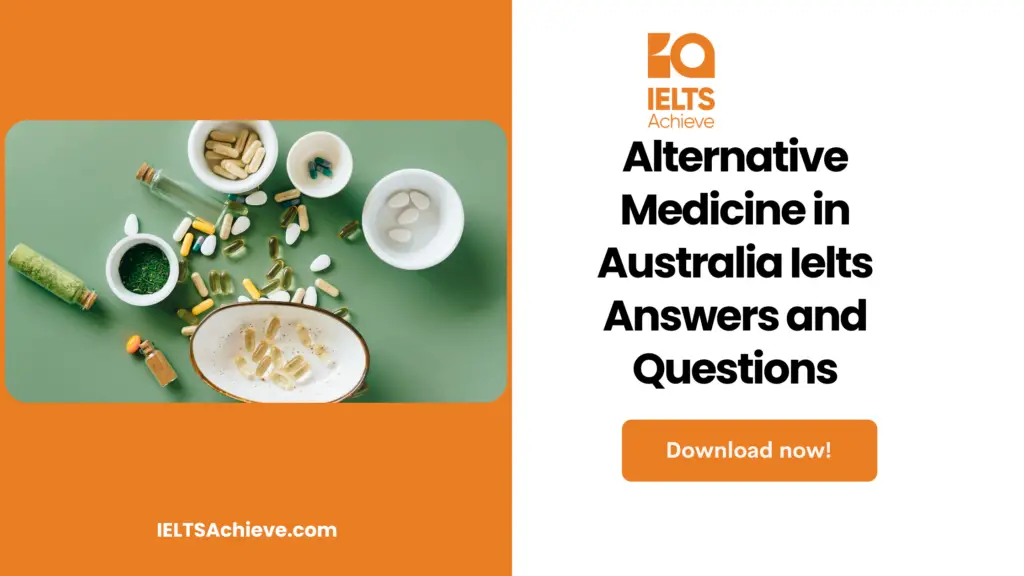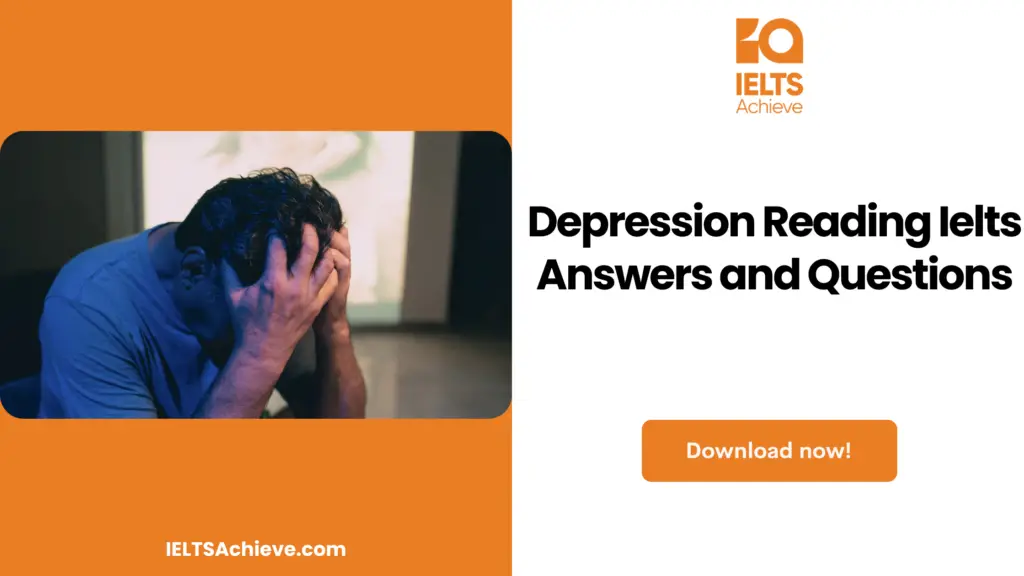The Blog post contains the following IELTS Reading Questions:
- IELTS Reading Multiple choice questions
- IELTS Reading Yes/No/Not given
- IELTS Reading Note completion

IELTS reading passage – Alternative Medicine in Australia
Alternative Medicine in Australia
The first students to study alternative medicine at the university level in Australia started a four-year full-time course in early 1994 at the University of Technology in Sydney. Their course is acupuncture, among other therapies. The theory they learned was based on the standard Chinese interpretation of this ancient healing art, which regulates the flow of ‘Qi’ or energy through the paths in the body. This course reflects how far some alternative therapies have come in their struggle for approval by the medical institution.
According to Dr. Paul Laver, a public health lecturer at the University of Sydney, Australia has the most conservative approach to natural or alternative therapies in the Western world. ‘We have a tradition that doctors are very strong, and I think they are very reluctant to allow any impersonator in their work to come into it.’ In multiple industrialized countries, traditional and alternative medicine have been working ‘hand in glove’ for many years. In Europe, only traditional healers can prescribe herbal medicines. In Germany, herbal remedies make up 10% of the national income from medicines. Americans visited alternative therapists more than Orthodox physicians in the 1990s, and spend about $ 12 billion every year on unscientific treatments.
Dissatisfaction with traditional medicine. Meantime, the popularity of alternative medicine in Australia has been steadily rising over the past 20 years. In the 1983 National Health Survey, 1.9% of people told they had consulted a chiropractor, naturopath, osteopath, acupuncturist, or herbalist two weeks before the poll. By 1990, this number had increased to 2.6% of the population. The 550,000 consultations with alternative therapists registered in the 1990 survey represent one-eighth of the total number of consultations conducted with clinically qualified individuals under the survey, according to Dr. Laver and colleagues who wrote in the 1993 Australian Journal of Public Health. ‘A better educated and less accepted public is generally frustrated with professionals and increasingly skeptical of science and experience-based knowledge,’ they expressed. ‘The high level of experts, including doctors, has been distorted as a result.
Instead of opposing or criticizing this trend, increasingly many Australian physicians, especially younger ones, form group practices with practitioners or practice themselves, especially in acupuncture and herbal medicine. Part of the incentive is funding, Dr. Laver stated. ‘The main feature of this is that most general practitioners are businessmen. If they find potential customers going elsewhere, they may like to offer a similar service.
In 1993, Dr. Laver and his colleagues published a survey of 289 Sydney people who attended the practices of eight alternative therapists in Sydney. These procedures provided a wide range of alternative treatments from 25 therapists. The subjects were suffering from chronic diseases, for which Orthodox medication was able to provide some relief. They commented that they would like the holistic attitude of their alternative therapists and the friendly, caring, and comprehensive attention they received. The cool, impersonal pattern of orthodox physicians was featured in the survey. Outflows from their clinics are on the rise, with numerous related studies conducted in Australia, all pointing out the shortcomings of traditional healers and leading physicians beginning to acknowledge that they can learn from the personal style of alternative therapists. Dr., President of the Royal College of General Practitioners, Patrick Store acknowledges that orthodox doctors can learn a lot from alternative therapists about bed rest habits and advising patients on preventive health.
According to the Australian Journal of Public Health, 18% of patients who visit alternative therapists suffer from musculoskeletal problems, and 12% suffer from digestive issues, which is 1% more than those with emotional troubles. Respiratory disorders account for 7% of patients, and Candida sufferers represent an equal percentage. Headache sufferers and those who complain of general malaise represent 6% and 5% of patients, respectively, and 4% see therapists for general health care.
The survey recommended that complementary medicine is a better term than alternative medicine. Alternative medicine seems to be an adjunct, strived after in times of frustration when orthodox medicine appears to be unresponsive.
Alternative medicine in Australia IELTS reading questions
Question (1-5)
Choose the correct letter, A – D
1. Ancient healing art regulates the flow of ‘Qi’ or energy through the paths in the
A. blood
B. body
C. nerves
D. skin
2. Australia has the most conservative approach to natural or alternative therapies in the
A. Western world
B. Sydney
C. Medical institution
D. Eastern world
3. Only traditional healers can prescribe herbal medicines.
A. in Australia
B. in America
C. in Germany
D. in Europe
4. Americans visited alternative therapists more than Orthodox physicians in the
A. 1990s
B. 1994s
C. 1993s
D. 1983s
5. The popularity of alternative medicine in Australia has been steadily rising over the past
A. 10 years
B. 20 years
C. 25 years
D. 15 years
Question (6 – 9)
Do the following statements agree with the information given in the Reading Passage?
Write
YES if the statement agrees with the claims of the writer
NO, if the statement contradicts the claims of the writer
NOT GIVEN if it is impossible to say what the writer thinks about this
6. In the 1993 National Health Survey, 1.9% of people told they had consulted a chiropractor.
7. By 1994, this number had increased to 2.6% of the population.
8. Alternative therapists are paid more than physicians.
9. The main feature of this is that most general practitioners are businessmen.
Question (10 – 13)
Complete the notes below.
Write NO MORE THAN TWO WORDS from the passage for each answer.
- In 1993, Dr. Laver and his colleagues published a survey of 10 ________ Sydney people.
- The impersonal pattern of 11 _________ physicians was featured in the survey.
- Respiratory disorders account for 12 ___________ of patients, and Candida sufferers represent an equal percentage.
- The survey recommended that complementary medicine is a better term than 13 ____________ medicine.
Alternative medicine in Australia IELTS reading answers
1. B. body
2. A. Western world
3. D. In Europe
4. A. 1990s
5. B. 20 years
6. No
7. No
8. Not given
9. Yes
10. 289
11. orthodox
12. 7%
13. alternative

